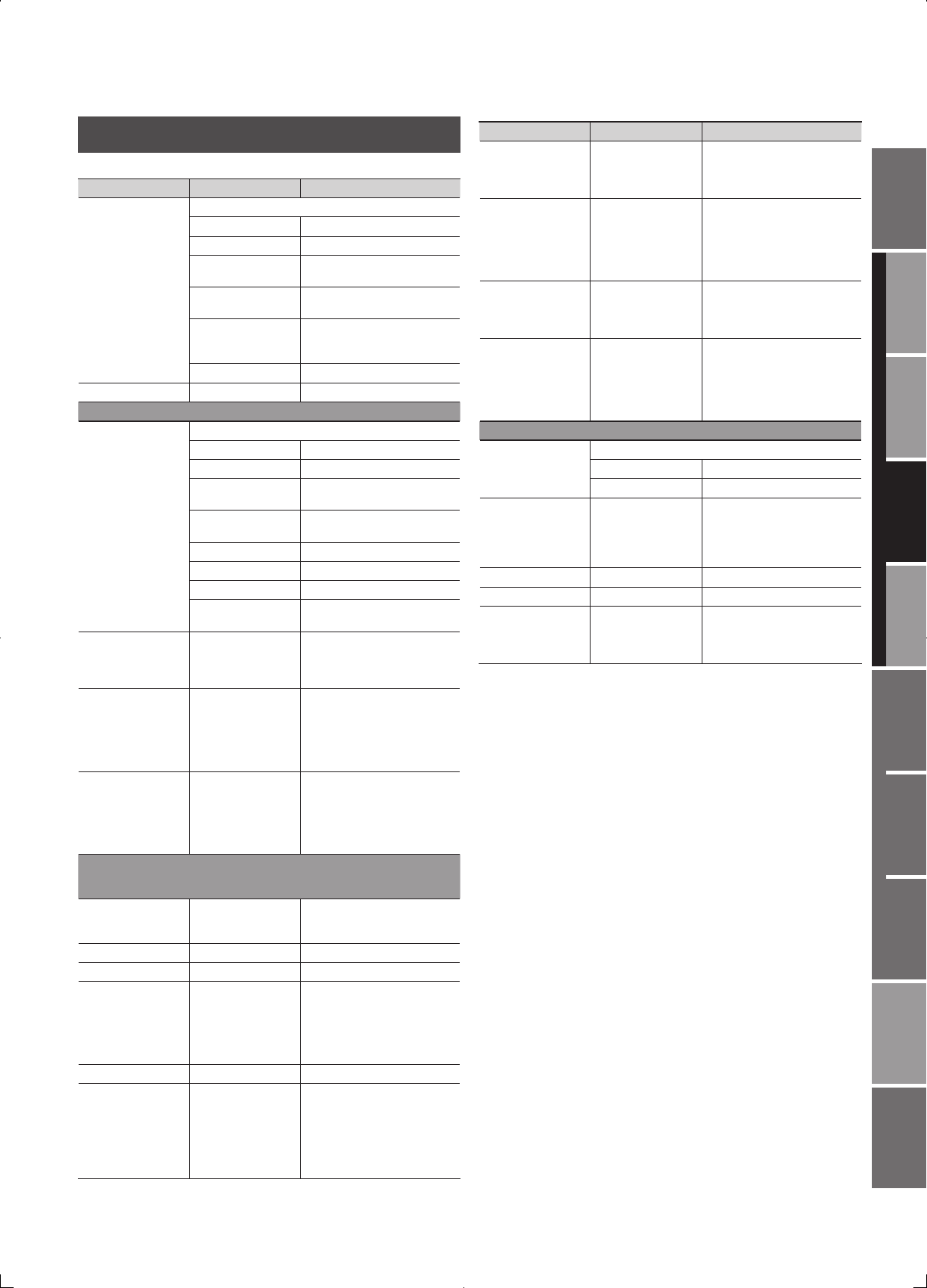
77
Overview
Appendix
USB Memory
Song Player
Digital Recorder
Synthesizer
Selecting Sounds Perform. Functions Editing/Eects Other Settings
Rec/Play/Edit Eects Rhythm Pattern
Reverb Parameters
These settings allow you to select the desired type of reverb, and its characteristics.
Parameter Value Explanation
Reverb Type
Type of reverb
00: OFF Reverb will not be used
01: REVERB Basic reverb
02: SRV ROOM
Reverb that simulates the
reverberation of a room
03: SRV HALL
Reverb that simulates the
reverberation of a hall
04: SRV PLATE
Simulation of a plate echo (a
reverb device that uses a metal
plate)
05: GM2 REVERB GM2 reverb
Reverb Level 0–127 Volume of the reverb sound
01: REVERB
Type
Type of reverb/delay
ROOM1 Short reverb with high density
ROOM2 Short reverb with low density
STAGE1
Reverb with greater late
reverberation
STAGE2
Reverb with strong early
reections
HALL1 Very clear-sounding reverb
HALL2 Rich reverb
DELAY Conventional delay eect
PAN-DELAY
Delay eect with echoes that pan
left and right
Time 0–127
Time length of reverberation
(Type: ROOM1–HALL2)
Delay time
(Type: DELAY, PAN-DELAY)
HF Damp 200–8000 Hz, BYPASS
Adjusts the frequency above
which the high-frequency
content of the reverb sound will
be cut, or “damped.” If you do not
want to cut the high frequencies,
set this parameter to BYPASS.
Delay Feedback 0–127
Adjusts the amount of delay
feedback when the Type setting
is DELAY or PAN-DELAY. Amount
of delay sound returned to the
input (this setting is valid only if
Type is DELAY or PAN-DELAY)
02: SRV ROOM
03: SRV HALL
04: SRV PLATE
Pre Delay 0.0–100 msec
Adjusts the delay time from the
direct sound until the reverb
sound is heard.
Time 0–127 Time length of reverberation
Size 1–8 Size of the simulated room or hall
High Cut
160–12500 Hz,
BYPASS
Adjusts the frequency above
which the high-frequency
content of the reverb will be
reduced. If you do not want to
reduce the high frequencies, set
this parameter to BYPASS.
Density 0–127 Density of reverb
Diusion 0–127
Adjusts the change in the
density of the reverb over time.
The higher the value, the more
the density increases with time.
(The eect of this setting is most
pronounced with long reverb
times.)
Parameter Value Explanation
LF Damp Freq 50–4000 Hz
Adjusts the frequency below
which the low-frequency content
of the reverb sound will be
reduced, or “damped.”
LF Damp Gain -36–0 dB
Adjusts the amount of damping
applied to the frequency range
selected with LF Damp. With
a setting of “0,” there will be
no reduction of the reverb’s
low-frequency content.
HF Damp Freq 4000–12500 Hz
Adjusts the frequency above
which the high-frequency
content of the reverb sound will
be reduced, or “damped.”
HF Damp Gain -36–0 dB
Adjusts the amount of damping
applied to the frequency range
selected with HF Damp. With
a setting of “0,” there will be
no reduction of the reverb’s
high-frequency content.
05: GM2 REVERB
Character
Type of reverb
0–5 Reverb
6, 7 Delay
Pre-LPF 0–7
Cuts the high frequency range
of the sound coming into the
reverb.
Higher values will cut more of
the high frequencies.
Level 0–127 Output level of reverberation
Time 0–127 Time length of reverberation
Delay Feedback 0–127
Adjusts the amount of the delay
sound that is fed back into the
eect when the Character setting
is 6 or 7.


















